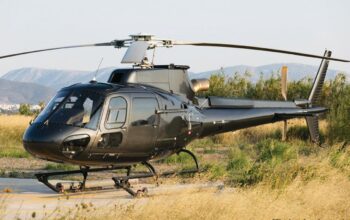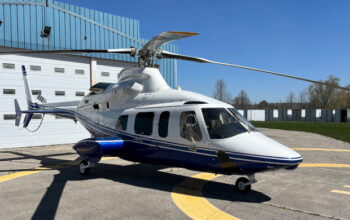In early November, Lilium hosted a webinar followed by a Q&A where company co-founder Daniel Wiegand provided more details on the battery technology that will power the Lilium Jet eVTOL aircraft. Vertical took the opportunity to speak to Wiegand to garner more insight on the topic.
This interview has been edited for length and clarity.
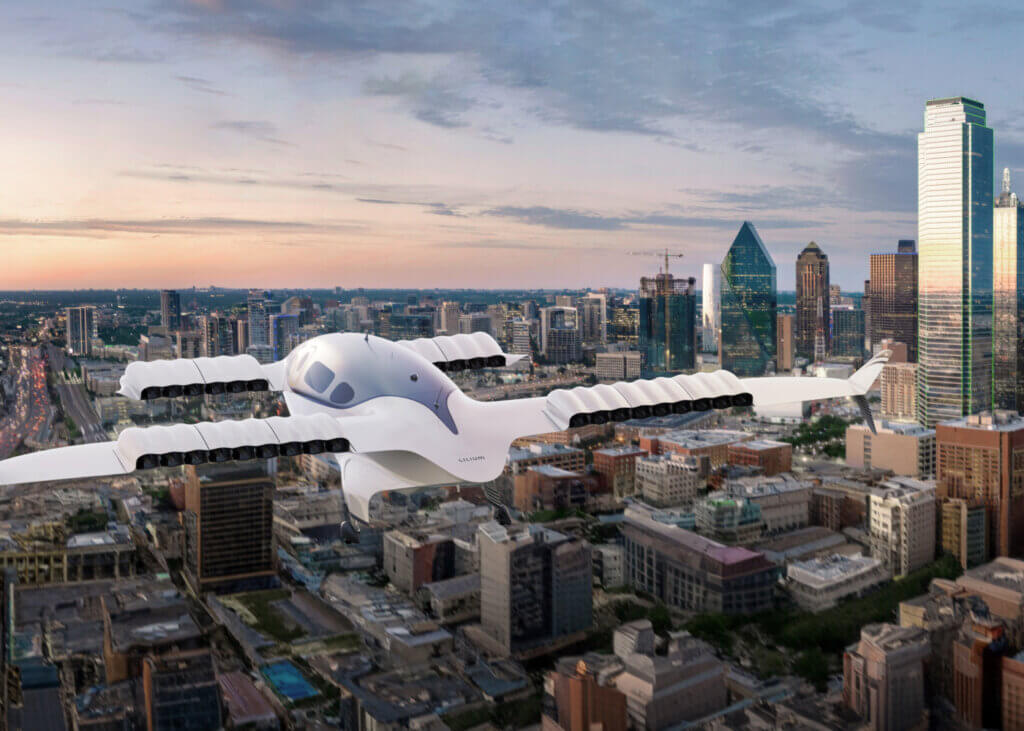
Alex Scerri: Starting with the battery energy densities quoted in Lilium’s battery presentation, is this at cell level as per the industry standard, or does it include any ancillary hardware?
Daniel Wiegand: We always exclusively communicate energy densities and power densities at cell level. If you draw the line somewhere else, it is very hard to standardize. Some stakeholders talk about pack level energy, but then, are they considering the mounting structure, cooling system, fire containment provision? It becomes very difficult to compare.
Alex Scerri: Some other developers are adopting a hybrid-electric power solution for regional air mobility missions. Was this ever considered at Lilium?
Daniel Wiegand: We considered that in the past and ran some comparative studies on what cost and performance levels we could achieve with hybrid versus all-electric versions. We felt that if you just take a snapshot today, with current battery technology, you might indeed want to go for a hybrid powered design. However, batteries are developing so rapidly that by 2030, we believe the hybrid solution will become redundant. The advantage of batteries is that they are far more energy efficient and consequently, cost efficient. As a result, the price per passenger-kilometer using the battery version is lower than for the hybrid. We felt it was too risky and not worth making the investment in developing a hybrid powered aircraft.
Of course, this is a specific decision for our business case because we think that once we have achieved a range of around 350 to 400 kilometers [218 to 248 miles], we can cover the entire market open to an aircraft with an unpressurized cabin. It could look different for longer missions and in a conventional takeoff and landing aircraft with a pressurized cabin where a hybrid power solution could give you much more range.
Alex Scerri: What methodology did you use to support the 25-second hover time assumption for your flight profiles?
Daniel Wiegand: This was done using the same approach as for any other aircraft certification when determining landing performance, be it landing distance or other performance parameter. We have defined different types of approach and landing profiles and developed different types of pilot aids and control and handling quality versions of the aircraft. We proceeded to test pilot performance for those different solutions and selected the one which we felt was giving the most consistent results from the pilots.
It does not rely on any new technology for landing aids, so it is a very simple solution and easy to certify. We have done an extensive test campaign with more than 700 simulated landings with multiple pilots with a wide range of experience levels. Challenging environmental conditions such as rain, night landings, and crosswind conditions were also tested. This allowed us to obtain the statistical basis to prove that we can consistently achieve that landing performance with a pilot of average ability. This is essentially the requirement in certification. Naturally, these are not the final tests, as those will be done on the actual conforming aircraft with the regulator’s pilots on board. We will need to do fewer landings than we have done already and in less severe conditions than we tested, which gives us good confidence.
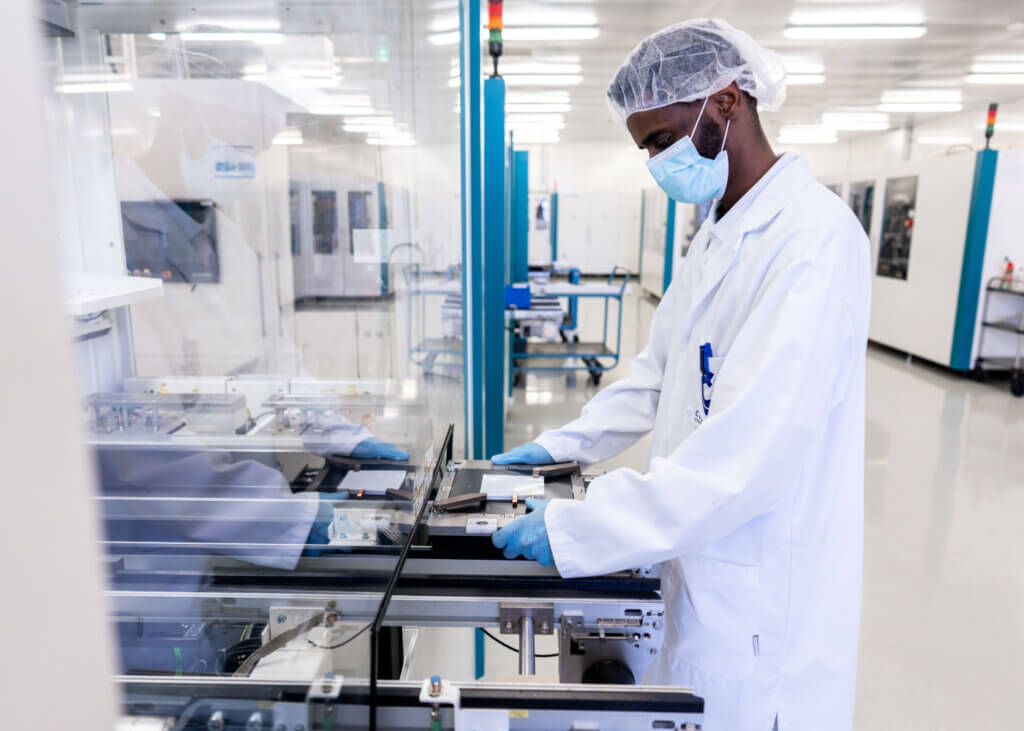
Alex Scerri: One issue of high disc loading is the ensuing high-speed downwash/outwash. Do you expect the Lilium Jet will be able to operate in standard vertiports as per EASA’s Prototype Technical Design Specifications for Vertiports?
Daniel Wiegand: The short answer is yes. A lot of measurements were done with our prototype aircraft in Spain which has the same disc loading. The downwash pattern is a bit different to a normal helicopter. We have some higher flow speeds directly under the aircraft, but it is a much more concentrated flow pattern than you would see in a helicopter where you typically have a 20-meter [66-foot] outwash and then you have the big vortex forming. We don’t see that vortex coming out of the landing pad. In the area directly under the aircraft, you have higher flow speeds, but while some people look at the aircraft and think we have business jet engine flow speeds, the flow speed coming out directly at the engine nozzle is approximately 100 m/s (328 ft/s), so it is still quite moderate.
Alex Scerri: For shorter flights than the 175-km (108-mi) mission, is it possible to have a diversion to a vertiport at the end of the mission — where a vertical landing can be completed — or is a conventional (forward) landing mandated at the diversion airport?
Daniel Wiegand: Yes, you can plan to land at a vertiport following the diversion in that case. The forward landing provision is only required if you want to exploit more of the energy reserves. If you do not need to do that because of a shorter mission, you can do the diversion to a vertical landing. I would say most operators will not need to fly at maximum range, especially as batteries improve, but for now, it is a helpful tool to extend the maximum range.
Alex Scerri: Can you share the runway length needed to accommodate a conventional landing for the Lilium Jet?
Daniel Wiegand: It will vary according to the conditions, but it is in the order of approximately 300 m [985 ft]. The wing loading of our aircraft is comparable to that of a business jet. Because of how our engines are configured, they force the flow onto the wing surface and the upper surface of the engines. We essentially have an augmented, high-lift device for boundary layer control, to keep the flow attached. This allows us to sustain low-speed flight, with a relatively low power consumption.
Alex Scerri: For the 175-km (108-mi) regional mission profile, what assumptions did you use in addition to maximum gross weight?
Daniel Wiegand: For the presentation, the assumptions are ISA [International Standard Atmosphere], sea level, with a healthy battery. Of course, our performance tools and our tests cover the corner cases of the envelope so usually we are testing the cells in hot and high conditions, failure cases, and during pilot maneuvers, etc.
We did not cover all of that in the presentation because that is getting into the dynamic behavior of the cell, which is much more difficult to convey accurately in such a presentation. Almost all the tests we have shown in the presentation were at 25 or 30 degrees Celsius [77 or 86 degrees Fahrenheit], but in practical applications, the cell might go to 45C [113F], and in some emergency cases, even to 60C [140F]. At those temperatures, the performance of the cell increases significantly, and it would have been very difficult to cover all those variables in the time available.
If you take a closer look into the specific cell power requirements, the charts show a slightly higher value than for sea level, and that accounts for some of the hot and high conditions or failure cases.
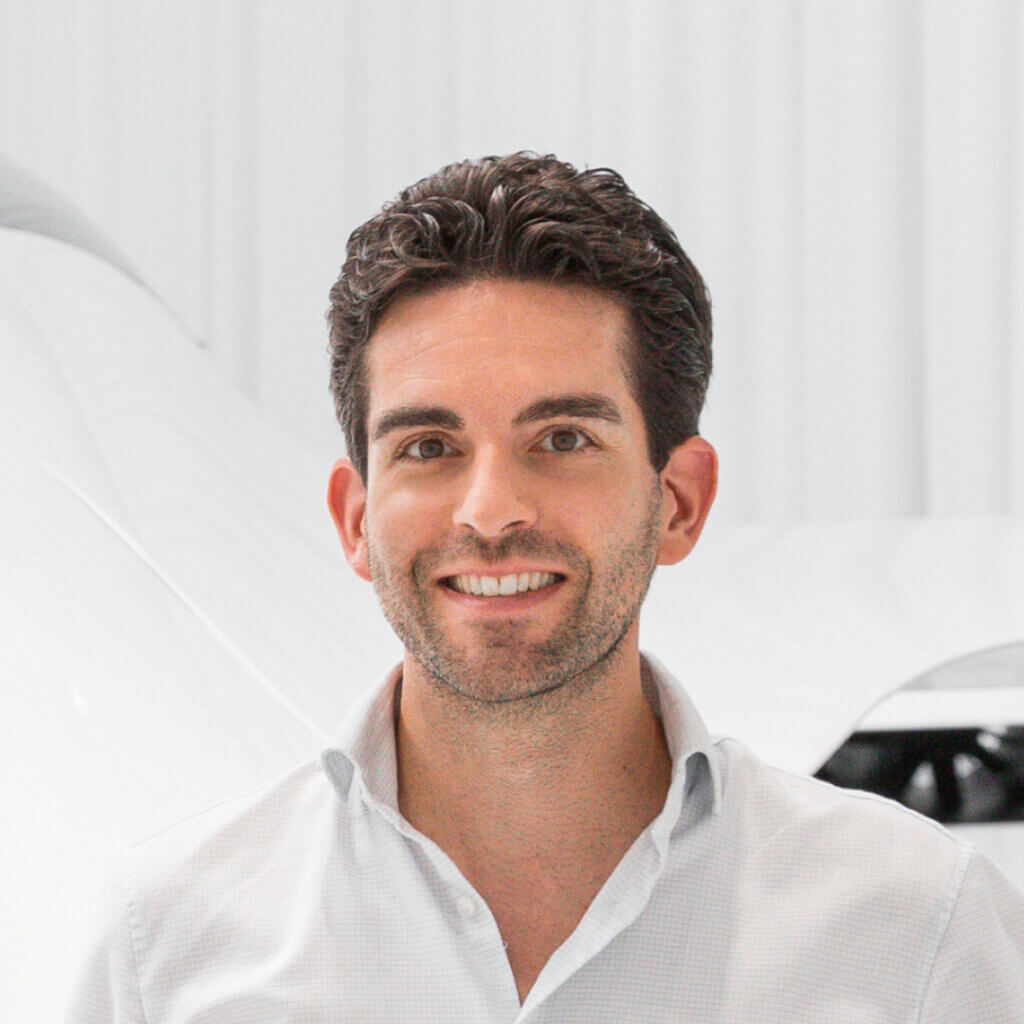
Alex Scerri: What will be the downtime required to replace the batteries at their end-of-life?
Daniel Wiegand: It is an overnight task. The airframe is designed in such a way that you can access the batteries from the side of the fuselage. There is a fairing cover on the battery pack, held in place by screws. You then detach the electric connection and simply pull the batteries out for replacement.
Alex Scerri: Did Lilium do any crash testing with the batteries installed in a representative Lilium Jet airframe?
Daniel Wiegand: We have tested the crash elements where you want to make sure that you get as homogeneous deceleration as possible without spike values. We have done extensive testing on the crash protection structure. The cells and the crash module have been tested for multiple hundred G impacts. We have yet to drop the whole surrounding airframe, which is done once and is quite expensive.
Alex Scerri: Currently, Lilium’s business case is assuming an 800-cycle life for the batteries. What is the projected lifespan of the Lilium Jet airframe itself?
Daniel Wiegand: It will be in the range of 35,000 hours. We intend to certify at least 15 years of operation. If you fly 2,000 to 2,500 flight hours per year, you are already beyond 30,000 hours. As for most new aircraft programs, we expect to be able to increase the airframe life after entry into service. I would say 30,000-plus hours is very feasible for a composite structure aircraft.
Alex Scerri: With the battery cycle life testing and specification at 25C, do you have any data to support what this will look like for higher operating temperatures, such as in the Middle East?
Daniel Wiegand: There are two types of cell life cycle tests. One is the zero to 100% charge and discharge back to 0 test. The second is the actual flight cycle operations test, where, although the test chamber temperature is fixed at 25C [77F] due to the takeoff and landing power draw and the fast charging, the internal cell temperature is significantly higher. In this test, we fully represent the temperature changes that the cell experiences in actual flight conditions.
Whether you are flying in the Middle East or elsewhere makes little difference for the cells as they are fully preconditioned. We precondition the cells before takeoff to 25C [77F] and then they are operating in a close to adiabatic environment with excellent thermal insulation. On top of that, we have a cooling system which can be used in flight when required. This preconditioning is what gives a consistent cycle life, mostly independent of ambient conditions.
Alex Scerri: Do you think the Federal Aviation Administration’s (FAA) approach to operational rules for innovative aircraft will be more or less challenging than those of the European Union Aviation Safety Agency (EASA)?
Daniel Wiegand: From the operational standpoint, it is not that easy to say. For example, EASA requires that you always land at a predefined vertiport following any failure. If you compare, even a Category A twin-engine helicopter is allowed to do an emergency landing basically anywhere. We think the FAA will not be taking such a strict approach.
With respect to reserve time, the FAA has for now just transposed the 30-minute VFR [visual flight rules] reserve requirement as it awaits comments from stakeholders. Of course, everybody in the industry is saying this will not work as some electric airplanes will not be able to even take off because their total flight time is less than 30 minutes. However, I am confident that the FAA will address this using a performance-based framework similar to EASA’s which enables safety and good range for electric aircraft.
Alex Scerri: Focusing on the technical aspects, what breakthrough or milestone do you think is needed to get retail investors more excited about eVTOL aircraft?
Daniel Wiegand: They are already reasonably interested now. If you compared eVTOL stocks with other companies with similar market capitalization, there is more retail investor activity than in biotech and comparable sectors. I think the real breakthrough will probably be visible commercial operations. The moment there is a commercial service where a retail shareholder can go on Skyscanner and book a flight on the Lilium Jet, [that’s when] I think [there] will be the final breakthrough to reality. We are not that far away from this.
Alex Scerri: When do you expect to fly the first representative aircraft for the certification process, and will this be at the Atlas Flight Test Center in Spain?
Daniel Wiegand: We have already started building the conforming aircraft. I think we are standing out in the eVTOL community thanks to EASA because they have given us clear requirements on the technical side for the type certificate, and for operations and pilot licenses. All these elements together allow us to build a conforming aircraft.
Final assembly is planned to start in December this year, with the wings mating to the fuselage for the first build. Throughout next year, we plan to build seven aircraft for the certification process. In terms of first flight, I think the aircraft will be rolled out for ground testing probably sometime early summer. Our target right now is to have the first flight in 2024. Naturally, that depends on the results of ground testing, but that is our target.
We plan to do flight testing for certification here in Munich, at our home airport, and in Spain.
Alex Scerri: Have you started any formal studies on the 50- to 100-seat eCTOL aircraft shown in the presentation?
Daniel Wiegand: It depends on what you mean by formal. We have done studies but it’s not like we have 50 engineers working on it. From our conceptual studies on this type of aircraft, we see that it is feasible. It will also depend on battery performance evolution. If you assume a 5% yearly performance increase on the batteries, you will get the ranges we have shown in the presentation which are quite impressive.
I think battery-powered flight is underestimated as a solution in the aerospace industry by the big players from both sides of the Atlantic. A mistake that the industry is making sometimes is that they are looking at batteries of today, and very often at batteries from five to 10 years ago because those are the ones you can source easily. If you evaluate electric aircraft based on this, it makes no sense. However, if we start designing an electric airliner today, I have, say, two years of preliminary design, then six years of certification so maybe a total of eight to 10 years until the first delivery. That aircraft will be in service for 20 years, so really, I should design it for batteries that I will have in 20 years, approximately the middle of the lifetime of the aircraft. If you start thinking about electric aircraft in this way, they become very attractive.
Part of my job is to work on the future battery cell technologies, and one of the things I am clearly seeing when speaking to the battery companies — from startups to big players in that sector — is they already have the technologies for these airplanes in their labs. There is a clear technological path to get to those energy density increases. This is not like with fusion power where we have been waiting for a breakthrough for the last 50 years. It will still take five to 10 years to industrialize and commercialize the technology, but the fact that it already exists makes it quite tangible.
Alex Scerri: Reflecting on the challenges of innovation, you previously said that some naivety is needed to launch into such a project. If you could go back and change one thing in the Lilium journey, what would it be?
Daniel Wiegand: I would probably be even more rigorous than I have already been when raising money. There will always be good and bad times in the financial markets. If you take Lilium, I think right now we are pretty much undervalued partly because of the current global financial environment. If I could go back five years, I would say always raise as much as you can when you have the opportunity.
Alex Scerri: Are there any final thoughts or anything else you would like to share with the eVTOL community?
Daniel Wiegand: Since we are addressing the community, and here I’m preaching to the choir, regulatory harmonization will be a big plus. I think everyone in the industry will agree, but of course, we must send this message to the regulatory bodies and hope they hear us.







